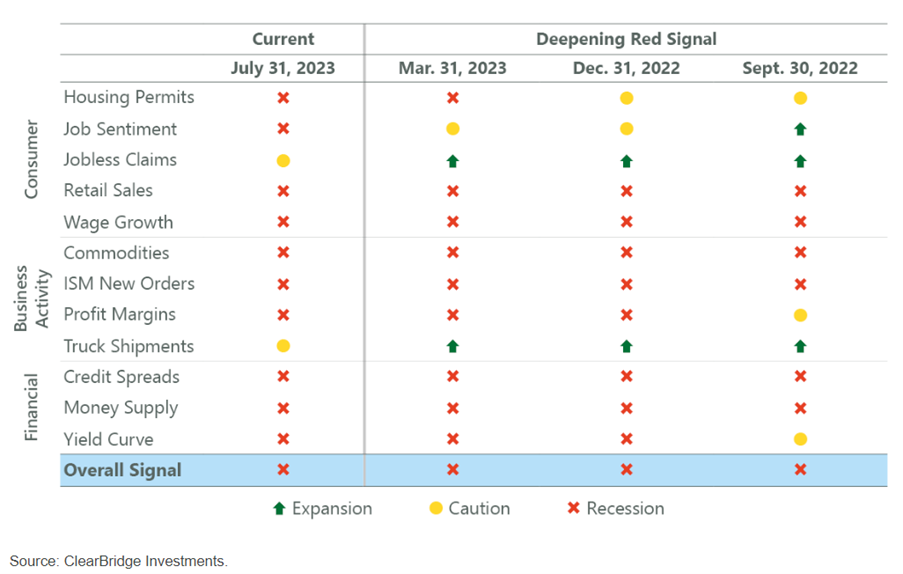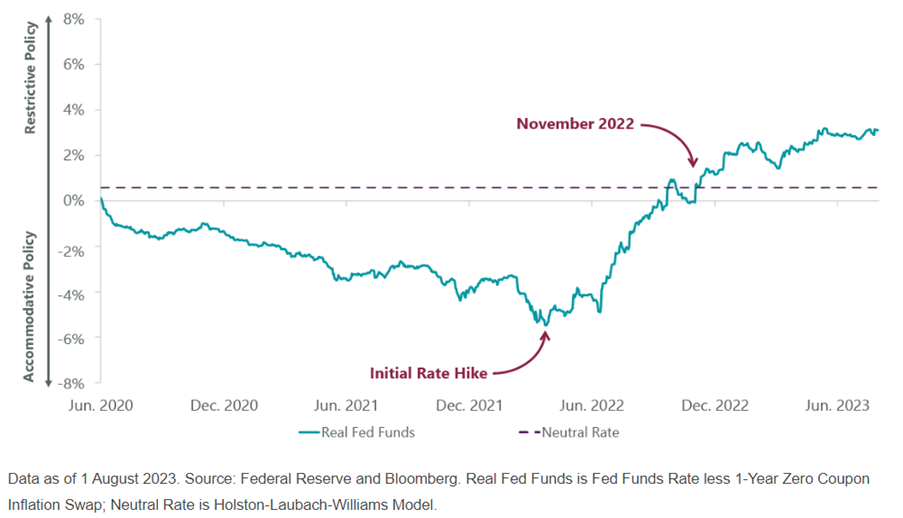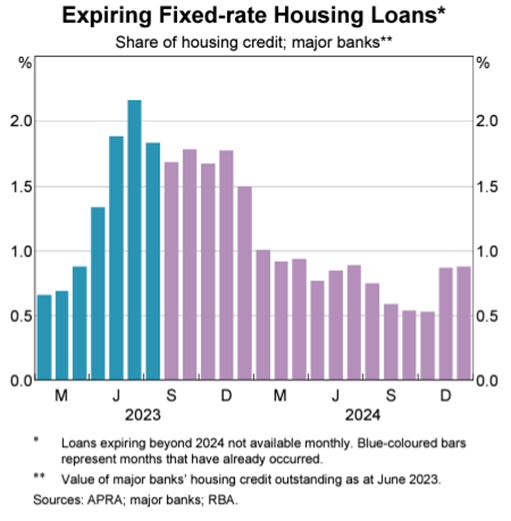The global economic landscape has witnessed unprecedented shifts and challenges in recent years, leaving investors around the world to grapple with uncertainty and adapt to new realities. In this article, we delve into the current situation, highlighting key challenges and opportunities that shape investment strategies in this dynamic environment.
The post pandemic era continues to be marked by uncertainty as economies endeavour to recover from the disruptions caused by the COVID-19 pandemic. The ongoing oscillation between economic rebound and concerns of rising inflation and recessionary risks has created a challenging environment.
For at least the last 12 months, we have been forecasting that Australia would avoid a recession, but Europe and the US would succumb. Due to this, we had expected an equity market pullback and yet equity markets have been resilient. Reflecting on this, we have been asking ourselves whether we got this call wrong.
Firstly, key economies within Europe have fallen into recession and it appears likely that others will follow suit, so on that element we were correct. Despite this, we are yet to see the US fall into recession. In fact, while their economic growth did slow, it appears to be staging a comeback.
The following table highlights economic indicators that have a proven record in predicting recessionary environments.

As you can see, there are no positive expansionary indicators at present in the US economy and the last two, recently moved to neutral. Putting this together, there remains a high chance that the US will fall into recession.
We will have to wait and see if this recession call will be proven correct but in hindsight, we were too early in making that call.
As we all know, interest rates were cut to historic low levels as central banks globally tried to kick start their economies post the pandemic. Eventually, that worked, and we then witnessed rapid interest rate increases to fight off inflation. It was at that point that we made the recessionary call as we believed the rapid increase would choke off consumption.
The following chart highlights the US situation and shows how monetary policy moved from easy conditions to restrictive conditions as interest rates increased.

Historically, it takes 12 to 18 months for a recession to start once monetary conditions become restrictive and in the US that only occurred last November. If history repeats once again, we should see a recession unfold in the US somewhere between later this year or mid next year. We are sticking with the US recessionary call.
Equity Market Strength
We have been surprised by the resilience of equity markets as we had expected a market pullback. Reflecting on this, equity markets have believed in the ‘soft landing’ narrative in which central banks manage to perfectly time the interest rate increases so that inflation falls back to their respective target bands while the economy continues to grow.
We are not in this camp. Looking at history, central banks have a habit of being far too accommodative or restrictive, encouraging both booms and busts. We get it, the time lags involved in monetary policy are just too long and the economic indicators too hard to read to achieve a perfect balance.
The other factor that market participants have been relying on is that if central banks do mess up, they will simply cut interest rates to free up liquidity. They have, after all, adopted this strategy since the GFC on numerous occasions. Again, we don’t buy into this view as we believe central banks are far more worried about inflation than a recession.
Inflationary Concerns
Since the late 1970s, central bankers have always been fearful of inflationary periods. Every economics student is taught about how Paul Volcker had to dramatically lift interest rates to 20% during the 1980s to crush inflation. Many of you will remember what that felt like, as I do, and we certainly don’t want to get back to those levels.
While headline inflation has eased, core inflation has proven to be more persistent than many central banks had expected as highlighted in the charts below. This is consistent with demand for services and labour markets remaining strong. The one key market bucking this trend is China, but more on that later.

While the Reserve Bank of Australia (RBA) has been on hold at its last two meetings, its own modelling implies that it needs to lift the cash rate from the current 4.10% setting to 4.80% to get inflation to the middle of its 2% to 3% band by 2026.
As noted in the August 2023 RBA Statement on Monetary Policy ‘The board’s current assessment is that the risks around the inflation outlook are broadly balanced. But it recognises that the crystallisation of upside risks would increase the likelihood of inflation staying higher for longer and a rise in medium-term inflation expectations. If inflation expectations were to rise, the result would be even higher interest rates, a more substantial slowing in the economy and a larger rise in unemployment to bring inflation back to target’.
The RBA will be watching wage growth very carefully over the next 12 months, trying to determine whether those inflationary expectations have indeed become imbedded as employees push for wage increases to offset the higher living costs.
The RBA is not the only central bank with a bias towards raising interest rates with minutes from the US Federal Reserve also point to a bias towards higher interest rates. This bias is now dawning on the equity market who are reframing their expectations of interest rate cuts and replacing it with higher rates for longer.
Any continued economic strength in the US is likely to be seen as confirmation that further interest rate rises are needed which will be a negative for equity prices.
China, is it still the economic powerhouse?
Australia’s economic fortunes are intricately tied to China and this is why we believed Australia would avoid a recession. We know that China brutally closed its economy during and immediately after the pandemic. Late last year, the Chinese government started to remove the restrictive policies and like many others, we expected a large economic bounce which would be a boon for Australian commodities hence helping us avoid recession.
While the immediate bounce did occur, it seems to have petered out. Growth in the June quarter was only 0.8%, a far cry from the numbers we normally expect to see. A drop in net exports and ongoing weakness in the property sector have contributed to this slower growth.
While household consumption has remained at trend, the dramatic rise in Youth unemployment to 20% is ringing alarm bells, as is the drop in wage income.

Both measures will be particularly worrisome for the central government, not only is support for them at risk but the threat of a greater economic slowdown is looming large.
China also has another massive economic migraine, its potential property market meltdown. The Chinese government is still dealing with one of the biggest corporate failures, the Chinese property developer Evergrande, and now the second largest property developer in China, Country Garden, is on the verge of collapse.
Country Garden has now missed two US dollar bond coupons and its bonds are currently trading at cents in the dollar. It shares, listed on the Hong Kong exchange have been smashed. The developer now has 30 days to find the money required to pay the coupons.
To date, iron ore prices have held up on expectations that the Chinese government will need to announce further stimulus packages to support the property sector. Property is a major source of wealth for the Chinese population and the central government can’t afford to have another point of dissatisfaction amongst its populace.
Can the Australian economy still avoid a recession?
A faltering Chinese economy is not a good omen for our own economy nor the equity market or the value of our own currency. Increased speculation of China’s response will generate additional volatility in our own markets.
The timing of the Chinese property developer contagion could not come at a worse time for our economy. As we noted earlier, we had expected Chinese strength to support our economy at a time when the rising cost of living and higher mortgage payments impacted our economy.
As the following chart highlights, we are only halfway through the so called ‘Mortgage Cliff’.

The chart above highlights the percentage of borrowers who have fixed rate mortgages expiring over the coming months. This means that those borrowers will see their mortgage rates go from roughly 2% to between 6% to 7%. To put that in context, a typical mortgage of $750,000 would have repayments balloon from $3,180 per month to $4,830 per month. Not a great outcome when energy prices are climbing by 30%, food prices are still rising and the last time I filled up my car, petrol was at $2.35 a litre.
Our economy is facing a number of critical economic junctions, the rising cost or mortgages, the rising cost of living and rents, a potential increase in distressed mortgagees placing properties on the market and a weaker Chinese economy.
The critical domestic indicator continues to be employment levels. We expect to see some weakness in the months ahead and the RBA is predicting unemployment will hit 4.5% by the end of 2024 up from the current 3.6%. Insolvencies in Australia are rising and now at their highest level since 2015, this is playing out particularly in building construction and hospitality. Any rapid rise in unemployment will be a large concern.
Are there any opportunities?
Despite the undertone of this article, it’s not all doom and gloom. A higher official cash rate equals better returns on bank deposits and traditional fixed interest. For some time, we have been recommending our that many of our clients reduce the exposure to growth assets in their portfolios to brace for a potential recession. That additional safety buffer can now be invested in more defensive assets that are generating yields around 5% per annum. Not a bad return in the face of rising economic threats.
Should central banks fall back upon their trusted strategy of cutting interest rates, then bond holders could be the lucky beneficiary, picking up some handsome capital growth.
Andrew Aylward is Chief Investment Officer at Keep Wealth Partners.
For more information contact us on 03 8610 6396
Keep Wealth Partners Pty Ltd (AFSL 494858)
This information is of a general nature only and may not be relevant to your particular circumstances. The circumstances of each investor are different, and you should seek advice from a financial planner who can consider if the strategies and products are right for you.







